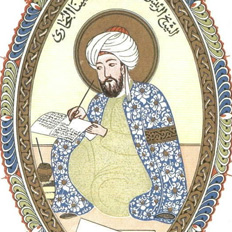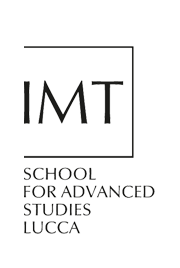


The Work
The Metaphysics of The Cure
The Author
Ibn Sina (Avicenna, d. 1037 CE)
The Project
Towards a Critical Edition
Introduction

A milestone of Western metaphysical thought
Its resumption of all previous speculation on the subject, and its tremendous impact on subsequent philosophers and theologians within and outside the Islamic world, make the Ilāhiyyāt (Divine Things) of the Kitāb al-Šifāʾ (Book of the Cure) not only the corner-stone of Avicenna’s metaphysics, but also a turning-point in the history of this discipline. Deeply rooted in Aristotle's canonical work and in the subsequent Peripatetic tradition, open to incorporate Neoplatonic doctrines, and attentive to the agenda of contemporary theology and the intellectual needs of the society of the day, the metaphysical thought of Avicenna as expressed in the Ilāhiyyāt finds in the notion of "synthesis" its key-feature. Composed during the third decade of the XI century CE, the Ilāhiyyāt aimed at providing a new, coherent, and systematic version of Aristotle's Metaphysics, and contributed decisively to this latter's progressive eclipse in Arabic philosophy; on account of its Aristotelian ascendance, it was soon translated into Latin and enjoyed immediate and wide success among philosophers and theologians all over Europe; it influenced sensibly, though less directly, also Hebrew culture. In this way, the Ilāhiyyāt not only realized, but also fostered fruitful dialogue among different cultures (Greek, Arabic, Latin, Hebrew), religions (Islamic, Christian, Jewish), and intellectual endeavours (philosophy and theology).
A critical edition, with translation and commentary, of Avicenna's Ilāhiyyāt is therefore an urgent need of the research on Arabo-Islamic philosophy and, more in general, of the historiography of Western philosophy. The lack of a reliable Arabic text of this work – and, consequently, of translations faithful to its original content – has prevented a correct understanding of Avicenna's masterpiece, which, on account of its width and density, has also defied so far thorough doctrinal and lexicographical analysis. The work is preserved in numerous manuscripts, only very few of which are considered in the current printed versions: the study of this wide and long-lasting manuscript dissemination is not only necessary for reconstructing Avicenna's original text, but is also interesting in itself, in so far as it offers objective guidelines to map trends and currents in the still largely unexplored field of post-Avicennian falsafa. Techniques of "digital humanities" will help realizing this demanding task, providing ways of storing codicological information into databases, softwares capable of complementing and empowering traditional ecdotic procedures, and means to present coherently the various elements of the project in the final product. The web publication will grant wide diffusion and accessibility to the results, both in progress and final, of the project,
Events
-
25 March 2021Presentation of PhiBor project by Ivana Panzeca ReIReS School on the Use and Study of Special Documents
-
30 November 2020Talk on research in the field of medieval Arabic philosophy by Silvia Di Vincenzo European Researchers' Night (BRIGHT) 2020
-
21 September 2020Presentation of website avicennaproject.eu by Daniele Marotta Summer School | Mobility & Humanities: esperienze e strumenti digitali
Publications
- Subject, Definition, Activity. Framing Avicenna's Science of the Soul A volume by Tommaso Alpina
- An Article by Amos Bertolacci on Metaphysics and Prophecy in Avicenna In the same volume, an article by Marco Signori on prophecy in al-Ġazālī
- A facsimile edition of an Avicennian manuscript by Amos Bertolacci and Gholamreza Dadkhah Avicenna (Ibn Sīnā): The Metaphysics of the Šifāʾ. Facsimile Edition of MS Malek Library (Tehran)...
Philosophy on the Border of Civilizations and Intellectual Endeavours:
Towards a Critical Edition of the Metaphysics (Ilâhiyyât of Kitâb al-Šifâʾ) of Avicenna (Ibn Sînâ)
ERC Advanced Grant 339621
Scuola Normale Superiore, Pisa, Italy
Piazza dei Cavalieri, n. 7
IMT School for Advanced Studies, Lucca, Italy
Piazza S. Ponziano, n. 6
Mail: info@avicennaproject.eu



